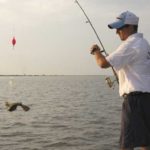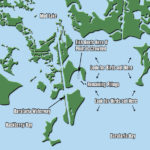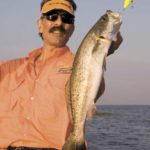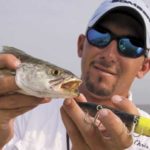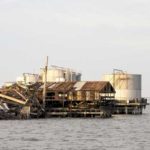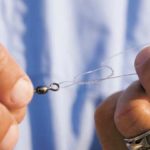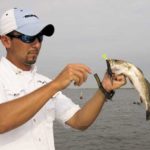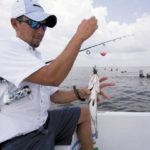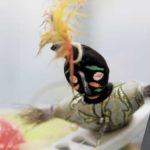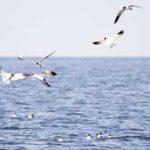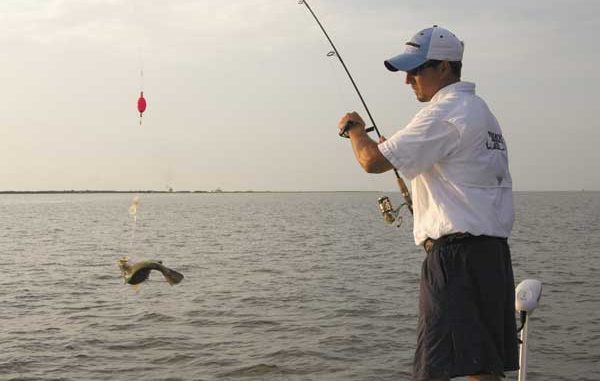
Manila Village reeks of history, but it’s the trout that draw oodles of modern-day anglers.
Anglers who fish the Manila Village area located in Barataria Bay just to the south of New Orleans may or may not know the historical significance of the spot. Made popular by magazine articles and television shows throughout the last several decades, Manila Village used to be a thriving, 50-acre marshland complete with houses built on stilts and platforms that were used for drying shrimp.
In fact, an excerpt from The Filipino Americans (1763 – Present): Their History, Culture, and Traditions states that the Manilamen at Manila Village introduced the practice of drying shrimp to the state and even the entire country.
In her book Filipinos in Louisiana, Marina Espina, a librarian at the University of New Orleans in 1988, wrote, “The year was 1763, and the schooner had unloaded its cargo at the Spanish provincial capital of New Orleans. Then its crew of Filipino sailors jumped ship and fled into the nearby cypress swamp.”
Thus, 1763 is the date officially recognized by the Filipino American National Historical Society as the year Manilamen arrived and settled in the Louisiana marshlands.
Because there were no Filipino women, the Manilamen courted and married Cajun and Indian women. These same men are said to have signed up with Jean Lafitte to join the army of Andrew Jackson at the Battle of New Orleans. Could they have been the “pirates” coming from the swamp?
Although there were other Filipino settlements around New Orleans — St. Malo, Alombro Canal, Camp Dewey, Leon Rojas, Bayou Cholas and Bassa Bassa — Manila Village in Barataria Bay was considered the largest and most popular of them all.
Manila Village continued to survive until 1965 when Hurricane Betsy washed it away. All that stands there now are a few pilings and a rapidly eroding marsh island that is more like 50 square feet rather than 50 acres.
Today, the primary interest in Manila Village by those who aren’t connected to its past is that the spot is what Capt. Theophile Bourgeois of Bourgeois Charters calls a “no-brainer trout hole.”
“The thing about Manila Village is that everybody knows where it is,” he said. “There have been countless articles written about it, and it can get crowded during the weekends, but the spot still holds trout — lots of trout.”
The primary reason Manila Village attracts so many trout is that the entire bottom for approximately a 1/2-mile radius around the remains of the village is a solid oyster reef. In fact, Bourgeois said the entire north corner of Barataria Bay is covered with oysters like this.
Why, then, does Manila Village draw more crowds than some of the other spots? According to Capt. Chris Pike, one of the charter captains who works for Bourgeois, its location right off the Barataria Waterway makes it an easy first stop for anglers on their way out in the morning.
“Most people probably find it first by spotting the diving birds on their way by,” said Pike. “After people realize what they’re fishing, it becomes a spot they stop at every trip to try and put 15 or 20 fish in the box before heading farther south.”
While Manila Village is subject to hold trout anytime from as soon as spring hits until October and even November, Pike believes the trout typically transition off the spot about the middle of August and move farther north toward places like The Pen. He doesn’t expect that to happen this year, though.
“Everything is about a month or a month and a half behind right now,” Pike said. “With the (Mississippi) river being so high, it slowed down the fish. They spawned a lot later this year, and the shrimp moved out to the Gulf a lot later. This is going to be the year to keep pounding Manila Village all the way through August and on into September.”
According to Bourgeois, diversion projects like Davis Pond and the one in Myrtle Grove no doubt pushed the salinity levels back, and Manila Village seems to be the northern most area where the salinity is good enough for trout.
“Most of the trout are from Barataria Bay to the Gulf of Mexico right now,” he said. “We aren’t catching much in the typical areas to the north like Salvador or Bay Round — there’s just a handful of fish in those areas that are usually heavy with trout.
“In order to catch the trout, you have to have the higher salinity level, which is going to put you in the Manila Village area. This summer, I would recommend making Manila Village your northernmost stop, and make it your starting point before working your way south. I’m working from Manila Village down to Port Sulphur to the east and Leeville to the west.”
Other than having the right salinity right now, Manila Village is made even better by its bottleneck effect on the water moving north on an incoming tide. All the water from Barataria Bay gets compressed at Manila Village as it funnels into the Barataria Waterway. This creates a situation where lots of baitfish such as pogies and mullet are pushing in moving water — all key ingredients for a productive trout spot.
Take into consideration that the bottom in the Manila Village area is only 1 to 2 feet deep as compared to the 8- to 10-foot depths of Barataria Bay, and you can see that the current lines become even better defined. It’s no wonder the area is such a popular spot.
Since Manila Village is so heavily pressured, Bourgeois and Pike offered some advice on how to approach fishing the area. Some tips are based on tide, and some are based on the willingness to separate yourself from the crowd in lure selection and location.
“The entire game is catching a decent tide,” Bourgeois said. “In Lafitte, it has to be 0.6 or better. Any less than 0.6 creates some issues that will definitely separate the men from the boys. It’s hard fishing under 0.6. And the most productive thing to do is to get there early and have all your fish by 9 a.m. Leaving at 8 a.m. to go catch trout at Manila Village is not a good choice.”
Anglers also have to make a decision once they get to Manila Village as to whether they want to go chase the birds in the surrounding bays or stay on the banks. The entire estuary is a haven for a lot of little fish, and you may have to catch five under the birds just to keep one. On the other hand, you won’t get nearly as many bites on the shore, but the bite you do get every now and then will more likely be a keeper.
“If you’ve got kids in the boat, it’s a no brainer,” Bourgeois said. “Catching five fish for every keeper is a great way to keep them interested.”
Other than the birds and the banks, Pike said there is another way to beat the crowds during the weekends. All the white PVC pipes around Manila Village mark oyster reefs, and being willing to back off the crowd to fish on your own could pay off with more bites.
“A lot of anglers might stay on the island because they aren’t comfortable getting off it because that’s where everybody else is fishing,” said Pike. “Don’t be afraid to go off on your own. Stay in the same general location, but get off the main island and the pilings to try some of the other reefs in the area. They hold just as many fish, but they don’t get pounded like the main spot does.”
Another common scene at Manila Village is boats that wind up fishing other boats rather than the fish. They see a couple boats pulling trout over the gunwale, and they almost immediately pull into the area to see if they can take advantage of the same bite.
“Everybody wants to get on the fish,” said Bourgeois. “And that’s all right, but moving in on boats that are catching fish can sometimes result in the entire bite shutting off. Say you have a school of trout working down a point, and there are already three or four boats working them. Somebody that’s just been watching will move in and unintentionally spoil the area for everybody.
“Beyond just being courteous, it’s more a matter of being aware of wind direction and tidal movement when you come in to where some boats are already fishing. Try being a fishing buddy rather than being the enemy. There are enough fish out there to go around.”
So how do two accomplished guides approach Manila Village? How do they fish the area? According to Bourgeois and Pike, they don’t do much of anything different than everybody else. Since the spot is loaded with 12- to 14-inch trout, it also pays to remember that when selecting lures and techniques.
“The first thing I throw in the morning is a small topwater,” said Pike. “I throw either a Top Dog Jr. or a Zara Spook Jr. That’s a good way to get those 15 or 20 quick fish in the box. Other than the topwater, I keep a white 1/4-ounce DOA shrimp under a cork, an opening night Salt Water Assassin Sea Shad either tightlined or under a cork and a white H&H beetle typically under a cork.”
Pike’s plan for Manila Village is to start his morning with the topwater then switch off to the popping cork a little bit later. After the sun really starts beating down around 9 a.m. or so, he often changes over to tightlining the Assassin on the bottom.
Bourgeois’ early bite lure is also a topwater, and he recommends being there right at daybreak to get in on the best action. From the end of the topwater bite on, Bourgeois says lure selection has as much to do with whether you’re looking for quantity or quality.
“I stay with the topwater later in the day if I’m strictly looking for the larger 16-inch trout,” he said. “On the other hand, if I want numbers, I go with some kind of plastic tightlined on a 1/4-ounce jighead or hanging under a cork. I also always keep an eye over my shoulder toward the bay looking for birds.”
All these lures fished in the proper places and with the proper presentation will show any angler exactly why Manila Village is such a popular place. However, beauty is often in the eye of the beholder. Bourgeois said 30 or 40 fish from Manila Village would be a good day.
“You can go out there and have 100-fish days,” he said, “but those kinds of days only come with some work. You’re not going to go out there and load the boat every day. A lot of it has to do with tide, moon phase and stuff like that. The best advice I can give anybody for fishing Manila Village is to do a lot less boat riding and a lot more fishing.”
And when fishing the birds, Pike requested that all anglers be courteous so that everybody can catch fish. With so many boats on the water confined to such a relatively small area, he suggested that boats moving to the birds shut down their big motors at least 200 or 300 yards away from the action, and troll in.
“The worst thing you can do is roar in there right in the middle of everything, and then shut down,” he said. “Moving in quietly and courteously gives everybody a chance to keep catching fish.”
And when the trout really get going under the birds, Pike pulls out what he calls his “bird box.” This box if full of discolored, bent and generally unattractive pieces of plastic that he wouldn’t consider fishing in other areas.
“Under the birds, it doesn’t matter,” he said. “Those fish are eating, and they aren’t too worried about color or profile. It could look like a shrimp, a mullet, a pogie — it doesn’t matter. White, chartreuse, black, purple — that doesn’t matter either. Keep a box like this for yourself that you can pull out when you fish the birds.”
While the village may have been washed away, the reason the village was settled here remains. These Manilamen knew what they were doing when they built their structures low to the water in an area that reminded them of fishing villages back home. Betsy washed away the thriving community, but the thriving trout fishing remains.
